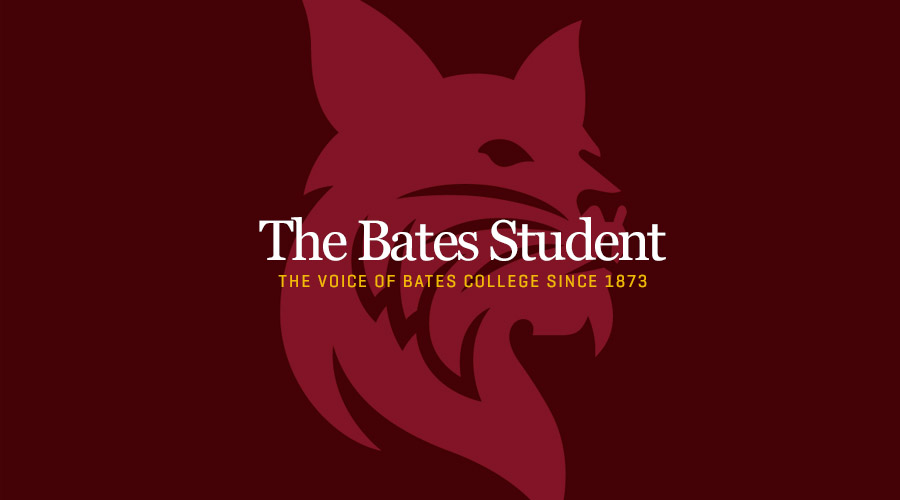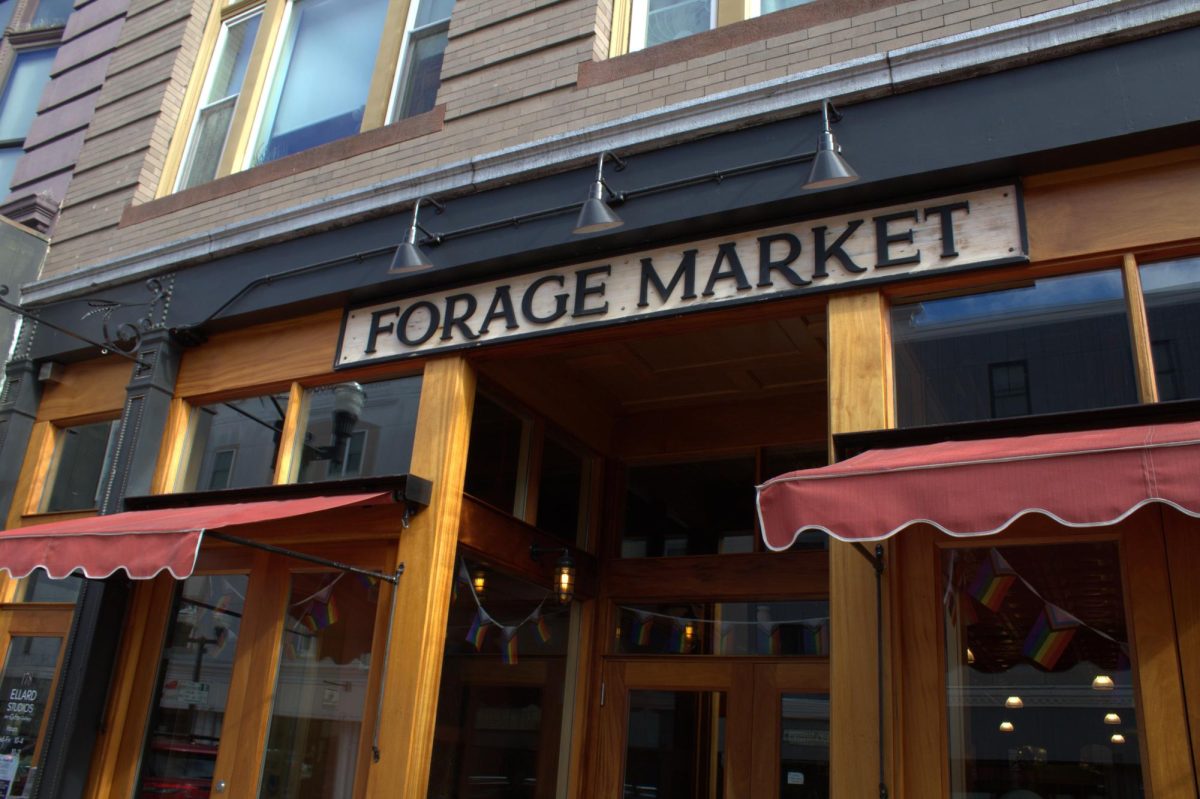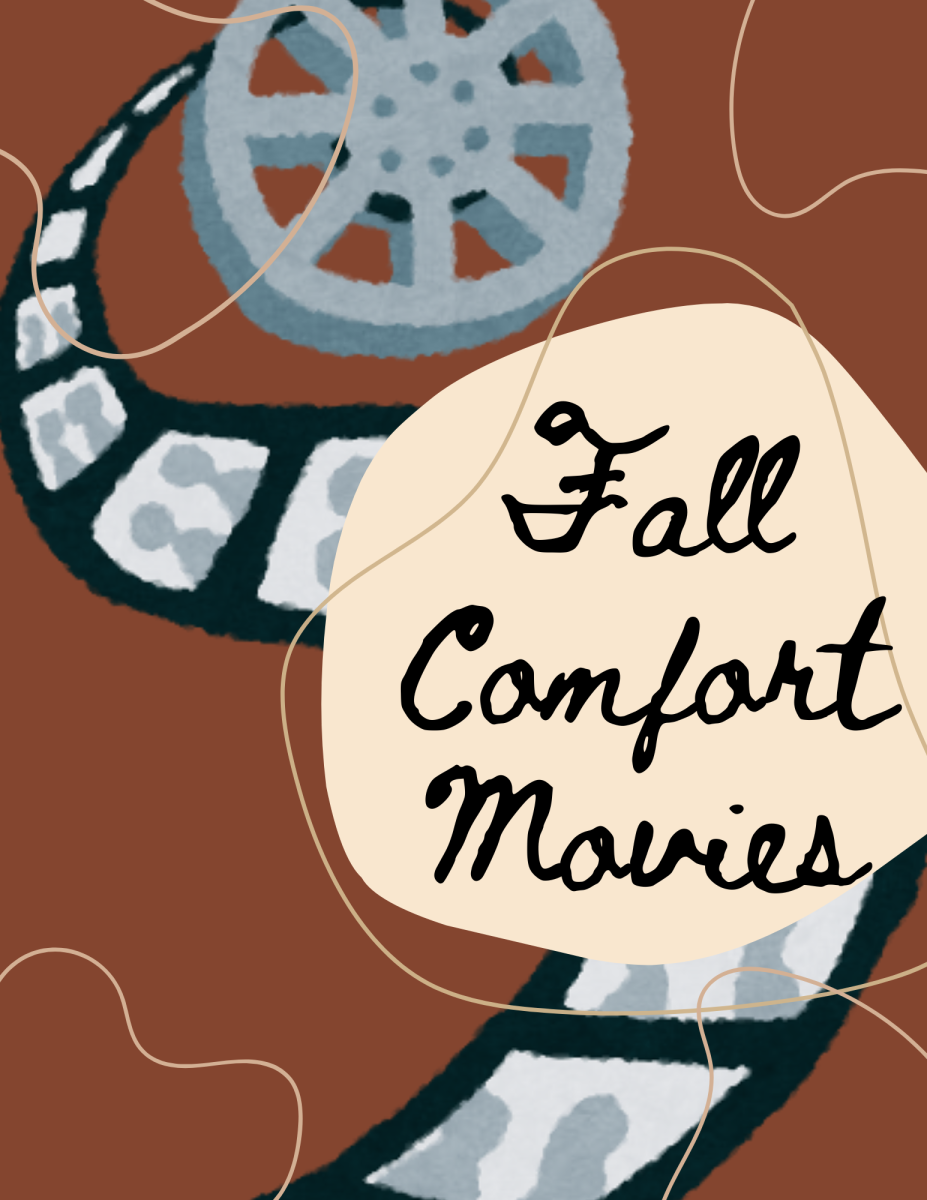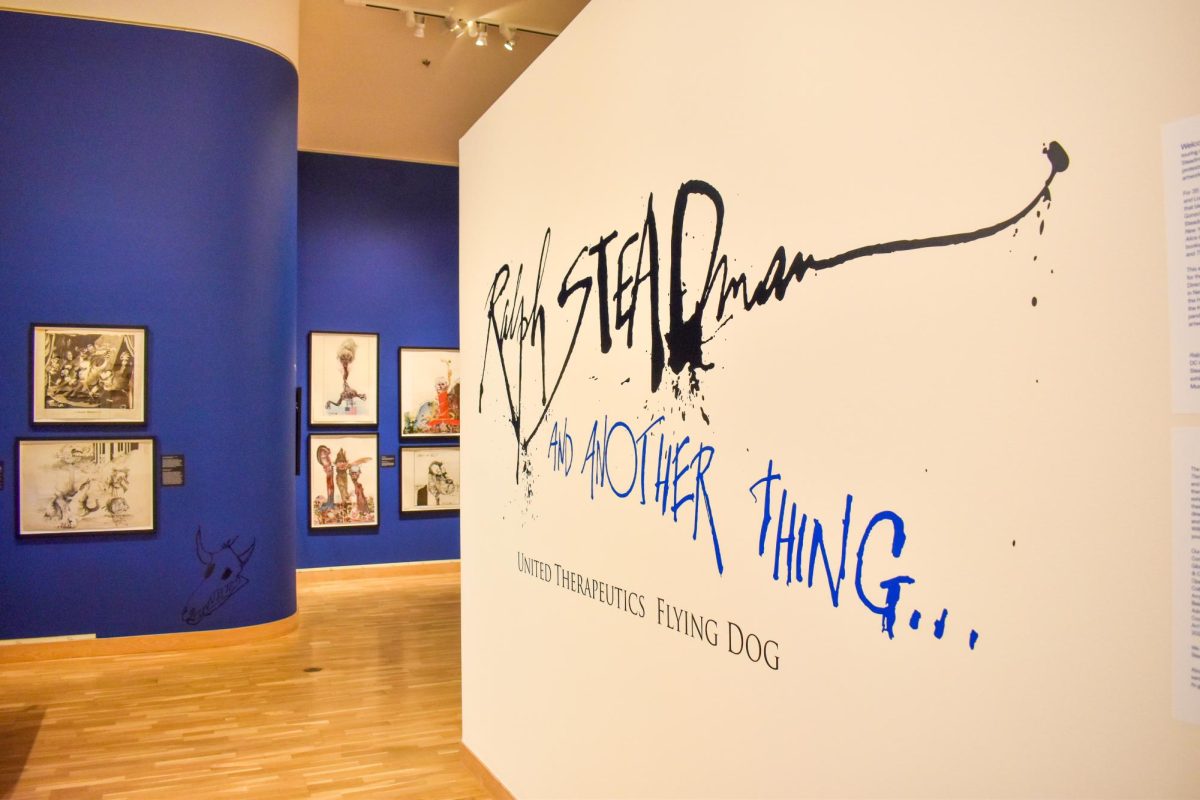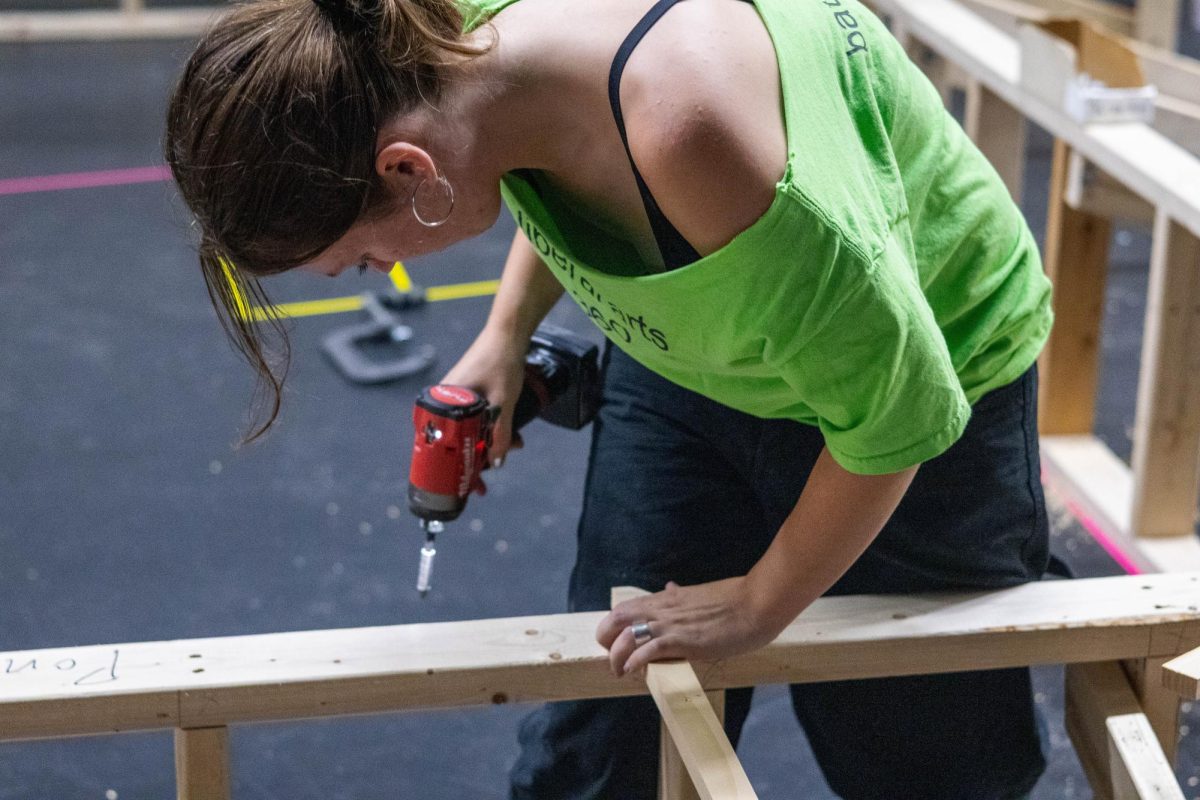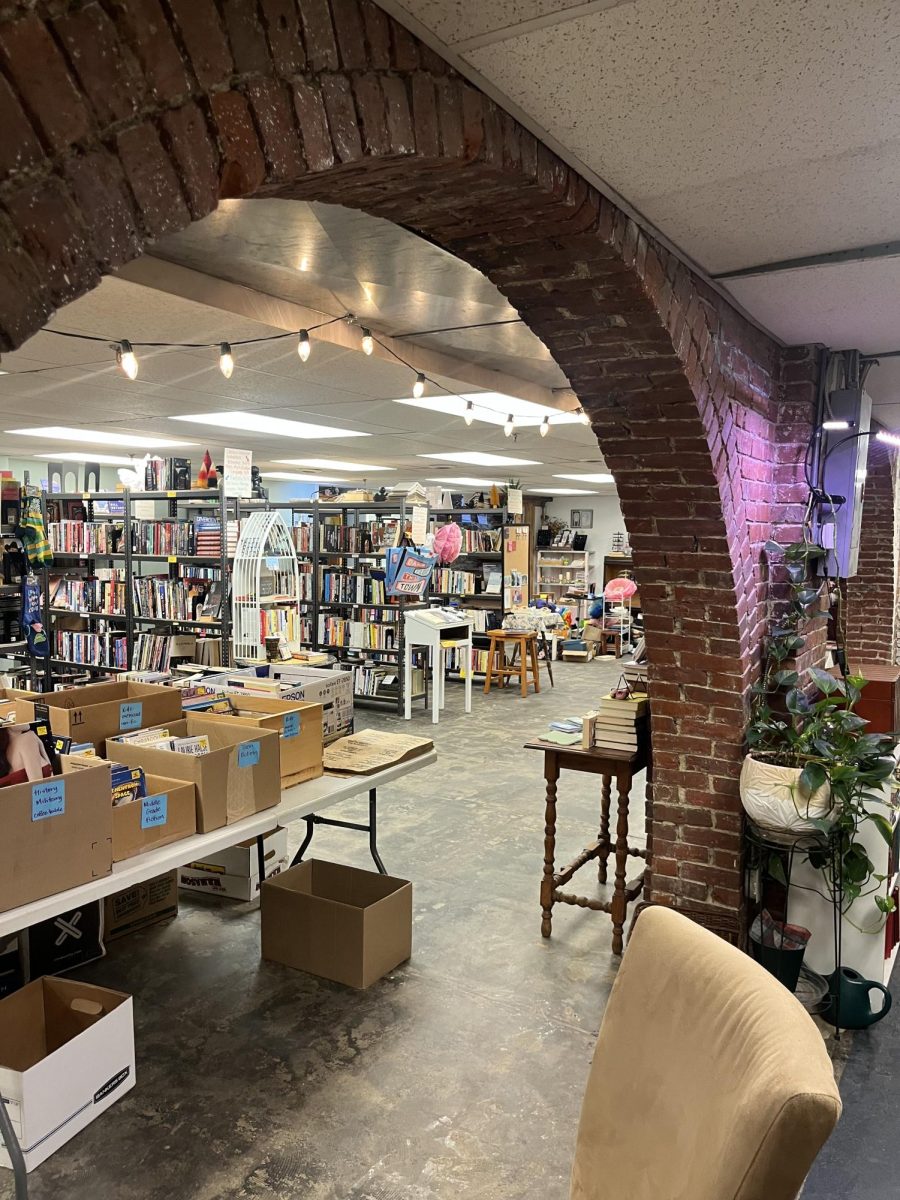 In the chilly, single-digit temperatures of Friday night, the glow of paper bag lanterns guided visitors along the path of the annual Bates Arts Crawl. Bundling up in parkas, knitted hats, and mittens, students, faculty, staff, and L-A residents spent the evening enjoying a range of creative activities and exhibitions across campus. A colorful map showed the route to all the events with a breadcrumb trail of stars.
In the chilly, single-digit temperatures of Friday night, the glow of paper bag lanterns guided visitors along the path of the annual Bates Arts Crawl. Bundling up in parkas, knitted hats, and mittens, students, faculty, staff, and L-A residents spent the evening enjoying a range of creative activities and exhibitions across campus. A colorful map showed the route to all the events with a breadcrumb trail of stars.
In Chase Hall, Arts Crawlers became actively involved in a drawing installation by Sol Lewitt, overseen by Professor Seeley of the Philosophy Department. The basic concept behind Sol Lewitt drawings is, since the most crucial part of conceptual artwork is the idea behind it, the actual process of creating the art is perfunctory.
Sol Lewitt wrote lists of instructions for those who wished to play a part in the installation. A crowd of students gathered around the wall drawings and, following the precise yet ambiguous sets of instructions, debated over and participated in partial creation of the artwork. It was a live process of art.
“I think my favorite was the interactive art on the curved wall in Chase Hall,” says junior Zena Sabath.
“My friends and I drew lines from one person’s shoulder to the next person’s knees and from an empty corner into the middle of the page. While Sol Lewitt may contend that the production of art is merely perfunctory, I think everyone who helped produce the drawings in Chase would completely disagree,” said Sabath.
Delicious apple crisp topped with ice cream and bags of warm, buttery popcorn perfectly complemented the event as the crowd made its way to Old Commons, where a variety of performances were taking place.
On the raised stage set up in the hall, one performance involved volunteer dancers who were given unique prompts for dance movements. The wide-ranging and dexterous movements of the dancers were inspired by such prompts as interpreting the lines of their palms through dance, or the relationship between your wrists and your knees.
Particularly amusing was when the dancers were asked to imagine themselves in unusual circumstances in familiar spaces. One participant danced in a way to represent the transition from being a normal sized person on a bed to being a tiny person on a carpet.
Behind the large audience, sophomores Juwon Song and Sarah Ashley Miller oversaw arts and crafts activities, such as mask-making to face-painting, for families. Kids and adults alike waited patiently to have their faces painted and emerged from Chase Hall with brightly colored demonstrations of living, breathing art.
Hot chocolate in the library arcade helped students transition from Chase to Coram Library, where Arts Crawlers could snap photos with friends in a photo booth.
For many, the next stop on the route was the Olin Arts Center, where an impressive range of student work was on display on the first and second floors. Inside one of the studio spaces, two students talked to visitors about their original art.
Isaac Thompson, a Bates junior, stood in front of his mesmerizing sculptures and explained the concept behind them. His metal-framed, irregular cubes improbably projected themselves from the wall and floor. Thompson has been working with the cube to create pieces that he welds together in the Carnegie Physics Lounge.
“I want the audience to see the object as itself,” Thompson explained. His work encourages people to ponder the relationships with space both inside and outside of his work and with the objects around it. Thompson hopes, overall, to communicate an appreciation of simplicity through that of his work.
On the other side of the studio, senior Eleanor Anaclerio exhibited her photographic explorations into the realm of the technique known as camera obscura. She discovered the technique while studying how a camera works. The row of photographs she had on display featured haunting images of shadowy bedrooms overlaid with images of the outside world.
To create these images, Anaclerio completely covered up a room so that it was entirely insulated. She then created a single hole to project a ghost image of the Quad or other environments into the room, thereby making the room itself into a species of camera.
When asked what she hopes to achieve with her work, Anaclerio explained that she is exploring ideas of the personal versus the public, and internal space versus external space.
Up and down the hallways, student artwork from Bates’ broad range of art classes became food for thought as art seekers paused to discuss and ponder. Photography, ceramics, drawings, and paintings made for a rich and diverse display of creativity over which many lingered in appreciation.
“The most distinctive characteristic of Arts Crawl, I thought, was the openness of everything,” observed junior Mariya Manahova. “Artists’ studios were open to viewers, so one could look, touch, and talk about the artist’s work, especially when it was still a work in progress and was very much a part of the artist’s heart and hands.”
Music in the Commons fireplace lounge brought the night alive. Piano players alternated with Chase the Fiddlers before the lounge became a stage for College a cappella groups. The circular room’s excellent acoustics were convenient for the musical performers, who performed for a crowd of fans squishing into the room to see the latest from the a cappella world.
The Arts Crawl is a recently instigated Bates tradition that brings together a community of creative minds and art lovers in the dead of winter. A night of sipping hot chocolate, listening to student artists and musicians, watching dancers, and actively engaging in collaborative art projects has proved once again to be inspiring sustenance for the lively arts scene on campus.


